

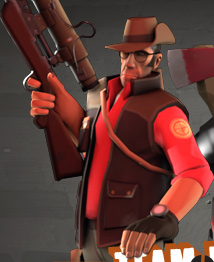
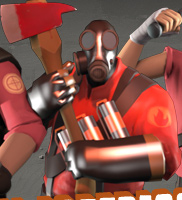

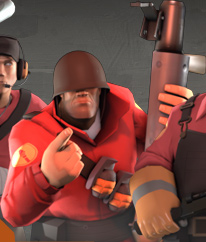
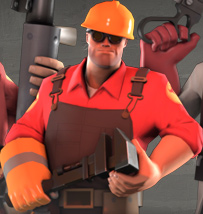
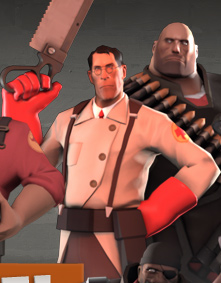
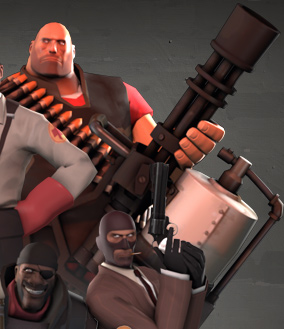
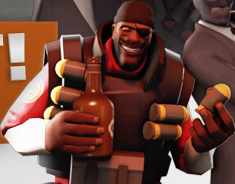
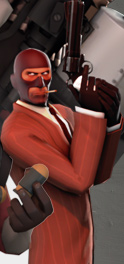
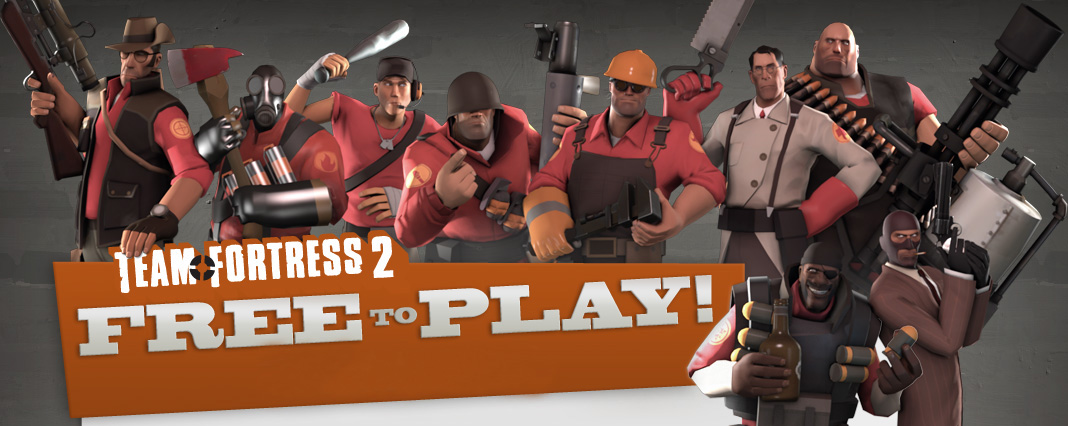
For general feedback about the game.
Steam SupportVisit the support site for any issues you may be having with the game or Steam.
One of the things we hope to do on this blog is to point out the creative things that members of the TF2 community are up to. The Steampowered TF2 forum members have been collecting links ever since TF2 was released, and you can take a look at the list (and its accompanying 46-pages-so-far (!) forum thread) here.

Recently, we've received a ton of email asking us if we had accidentally leaked the details of the Spy's unlockables, after Kaanin created this fake web page detailing his version of what the release should contain. His mocked-up image was convincing enough that even some of us at Valve were momentarily fooled. Well played, Kaanin.
Well, we were expecting some response to A Heavy Problem, but we severely underestimated just how much interest everyone had in contributing. If you're one of the many folks who emailed us proposals and haven't received a response, please accept our apologies, because there's just too many for us to reply to all of them. From the large amount of feedback and forum activity, it's clear that many of you found this interesting, so we'll definitely be posting more design goals. For those of you still thinking about it, here are some more tools to use in evaluating ideas:
The last one raises another question: What other goals should we have for the Heavy update? Half the battle of good design is choosing the right goals and the right constraints. In A Heavy Problem, we specified a goal for you, and the constraints that had to be kept in mind. Try taking a shot at defining the overall set of goals that the Heavy unlockables should be trying to achieve. Watch out for the common circular logic trap of finding an idea you like and then trying to extract goals from it. We find it's best to not think about ideas at all at this point, and to focus entirely on more abstract goals. What are the biggest problems in the Heavy class? In what situations is it the least fun? Like idea evaluation, goal generation is a big topic in itself, and one we'll go into in a later post.
To continue from the previous week, today we have some additional finished trading card images for you to take a look at - the Heavy and the Medic.




As Gabe mentioned in his lengthy response to an email recently, the next class pack will focus on the Heavy. For the Medic and Pyro packs we kept our goals for the pack pretty close to our chest, but for the Heavy we've decided to open up the process a little. Our hope is that you'll get a better insight into how we approach design problems, and have some fun thinking about the problem yourself. We do design collaboratively at Valve, and one of the side effects of it is that we really need to be able to evaluate design ideas as objectively as possible. Otherwise design meetings would devolve into subjective arguing. We've found that the best method of working objectively is to have clear goals up front. Once we've got clear goals, we can throw a bunch of ideas up on the board and measure how well each idea achieves those goals. Often the work of testing those ideas against the goals causes us to further refine or clarify the goals.

Here's a list for how to help define the problems we want to solve with the Heavy pack. It's pretty much exactly what we would start a design meeting with. Try coming up with a new unlockable for the Heavy that addresses the goal, while staying within the constraints as much as possible. The extra section includes other details that are useful when trying to compare two viable ideas.
Goal: Make the Heavy more viable when he has no Medic to pair with.
Constraints:
Obviously, there are many more, like the full set of skills required to be a good user of an invulnerability charge. If you compare his combat related skills to that of the Soldier or the Demoman, you'll see he has a unique set that's less about aiming & dodging, and more about commitment choices and accurate battle evaluation. When thinking about your new unlockable idea, think about the new skills, or changes to old skills, that it'll require the Heavy to learn. It's best if those new skills aren't identical to ones required of other classes, or class distinctions become less interesting.
In the end, solutions almost always require tradeoffs, from the breaking of a constraint to the addition of a large chunk of work to solve understandability. A framework for objective evaluation is a great tool, but ultimately, something also needs to be fun, and that's hard to evaluate on paper. We try to end our design meetings with three potential solutions, and then implement crude versions of each. Playtesting those crude versions usually shows us some pros and cons that we didn't see in the meeting. Solving those cons, without giving up any of the pros, is the real meat of game design.
I hope you have some fun thinking about this with us.
During the development process with most of our games, we end up creating content that, for a variety of reasons, may never see the light of day. Sometimes we may not have the time to bring the content to finish, sometimes we use them as a company-only experiment, and sometimes the content just isn't in line with what we're doing at the time. Needless to say, there's a fair bit of cool stuff that we've never been able to share with our fans. We're happy to say that this blog has now given us a unique format in which to share some of the unused artwork with you.



